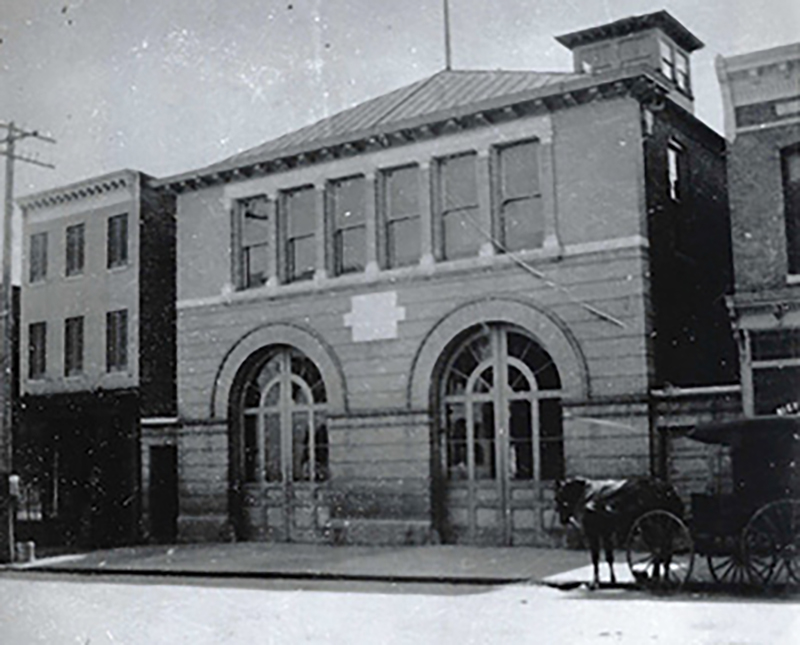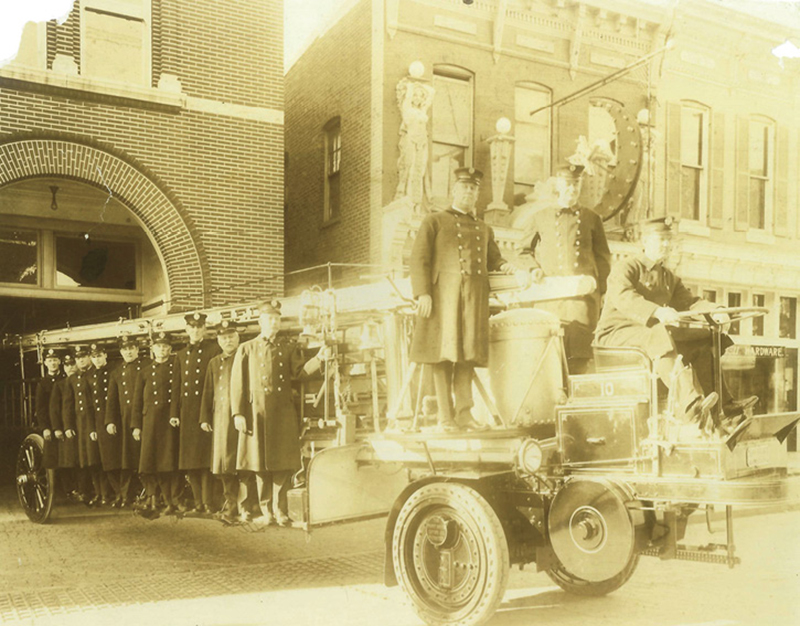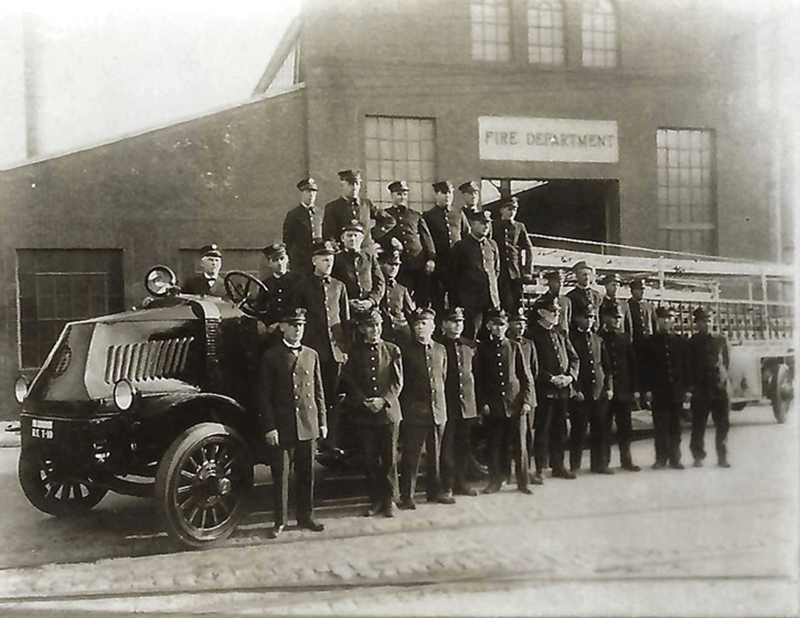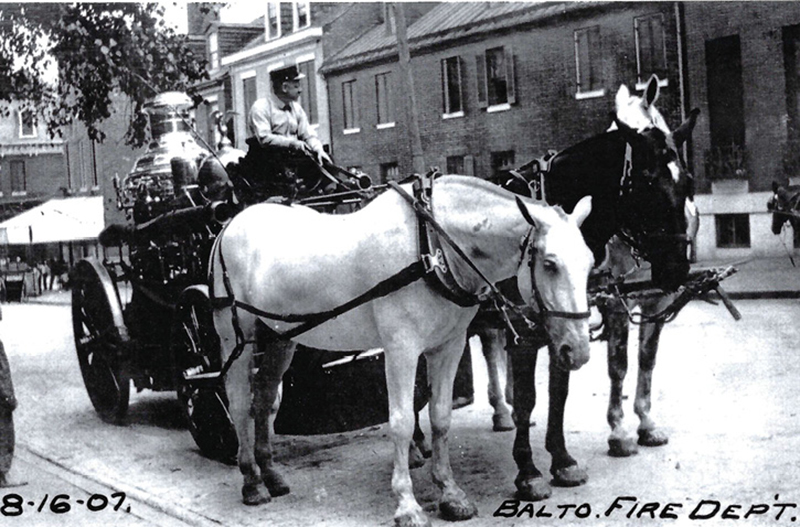By Ricky Riley
Sitting at 1503 W. LaFayette Ave. in West Baltimore is the home of Baltimore City (MD) Fire Department Engine Company 8, Truck Company 10, Medic 15, Medic 27, and Battalion Chief 3. In this one-story firehouse built in 1967, the engine and truck may not be the busiest in runs for the city, but they are at the top of the list for box alarms and working fires. Their response area can take them all over the city, but West Baltimore is where the bulk of their work is done.
These companies assigned to this house, and the dedicated members serving on Engine 8 and Truck 10, have done an excellent job chronicling their work throughout the city. They do this through social media outlets including Facebook, Instagram, and Twitter. The video and still photos capture the work they do and the job they do protecting the citizens and property of Baltimore. This article features their rigs and history. The department as a whole and the various engines and trucks that serve the city are all very steeped in history and tradition. Just walking into any of the older firehouses in the city, you might find yourself begging for the walls to talk and tell you their stories.
The pictures and documentation of these companies are a project that I had wanted to do for a very long time. The ability to show the history of these two companies and to have the pictures to show each step of their progress, from the days the doors opened till today, says a lot for the forethought of many people. These historians, firefighters, and buffs captured so much of these companies’ history that I thought it should be shared. So, before we move forward with looking at all these rigs, let’s look at the history of the department.
History
The first official recorded fire in the city was on March 16, 1749, but it was not until September 22, 1763, that the first volunteer fire department was organized. In 1834, the Baltimore United Fire Department was created to help establish some rules and procedures for protection of the city. Through some tumultuous times and discord with the volunteer companies, then Mayor Tom Swann appointed a committee to establish a new fire department. This committee provided an ordinance on December 7, 1858, that passed establishing a paid fire department to protect the City of Baltimore.

1 On March 1, 1895, Hook & Ladder Company 10 was organized and placed in quarters on Lafayette Street. Its initial apparatus assignment was a used Hayes aerial 55-foot unit, built by the LaFrance Co. in 1888. The rig was formerly Hook & Ladder Company 6’s apparatus. (Photos 1 and 5-7 courtesy of the Ed Schwartz Collection.)
On February 15, 1859, the paid fire department went in service with four engine companies, one truck company, a chief engineer, two assistant chief engineers, and numerous officers with the rank of foreman. The first fire for the newly created career fire service was February 23, 1859, on Broadway just south of Pratt Street. This blaze was handled in two hours through the quick work and response of the new department. In May of the same year, three more engine companies were created, and in July, the Fire Alarm Telegraph system was established with 30 street boxes.
Early Sunday morning on February 7, 1904, the Great Baltimore Fire was reported at the John Hurst and Company building. The alarm was received as an automatic alarm, sending the Salvage Corps first, followed by Engine Company 15, Truck 2, and the Fifth District engineer. Engine 15 arrived with smoke showing from the large building and entered the basement with a chemical line. The fire rapidly extended from the basement up the elevator shaft, causing the fire to grow beyond the capabilities of the units on the scene. The ensuing fire destroyed a large part of central Baltimore, including more than 1,500 buildings and spanning an area of 140 acres. The entire department responded to the fire along with numerous calls for assistance to cities such as Philadelphia, Washington DC, Wilmington, and New York City. Lessons from this fire helped form a better water supply system and fire protection for the city.
In 1912, the department saw its horsepower to its steamers, ladders, and hose wagons reach its peak of 330 horses owned by the department. The same year, the city started the motorization of the fleet. This started with the removal of the horses, which were replaced by internal combustion engines made by Christie. The fire department simply removed the fitments for horses and bolted the front-wheel-drive-powered units to the traditional steamers, powered fronts taking the place of the horses.

2 Later, in 1895, the city received a new ladder truck, a Hayes 75-foot aerial that was built by the LaFrance Co. This rig was drawn by three horses and the aerial had to be manually raised. (Photos 2-4 courtesy of Baltimore City Fire Department.)

3 In 1908, the company received another new Hayes aerial truck with a Dahill hoist built by LaFrance Co. This rig was drawn by a three-horse team. 1916 saw the retirement of the horses from Hook & Ladder Company 10, and the rig was outfitted with a two-wheel Christie power unit.
| Baltimore City FactsMayor Brandon ScottIncorporated in 1797585,708 population in 20202,000 miles of roadways92 square miles150 neighborhoods293,877 housing units242,694 households38 fire stations |

4 In 1923, the Christie tractor was replaced with a Mack AC tractor still towing the Hayes/Dahill aerial.

5 In 1923, Engine Company 8 was issued a used 1913 American LaFrance 750-gpm engine. This had a 35-gallon tank, 1,000 feet of 2½-inch hose, and 250 feet of ¾-inch hose.

6 In 1904, Baltimore put a rebuilt 1888 LaFrance steamer in service.

7 In 1915, the city received a rebuilt steamer from 1899 by LaFrance with a Christie front.
| Baltimore City Fire Department Facts1858 Career fire department founded1904 Great Baltimore Fire38 Fire stations35 Engine companies17 Truck companies6 Battalions36 EMS transport units6 Specialty units1,600-plus members354,772 cumulative responses in 2020Source: 2020 BFD Annual Report |
Engine Company 8
Engine Company 8 was formed by the city department on March 8, 1871. The firehouse was located on Mulberry Street and was a two-story brick building. The first rig for the company was a used steamer built in 1858 by Reaney & Neafie that had seen service with a volunteer department in the city and was named “ALPHA.” This rig was acquired in 1858 from a ship docked in Baltimore harbor while the steamer was headed to Norfolk, VA, for delivery. This rig saw limited action with Engine Co. 8 as, while operating at a fire on May 22, 1871, the boiler exploded, seriously injuring Acting Engineman Charles King and killing City Councilman Harry Weaver, who was walking by the scene.
Engine Company 8 went through a number of steamers from 1871 to 1905, including the following:
- 1871–New steamer built in 1870 by William Ives & Son.
- 1884–Received a used steamer built by Poole & Hunt.
- 1888–Received a new LaFrance steamer drawn by a three-horse team.
- 1904–1888 The LaFrance steamer was rebuilt.
- 1915–Received a rebuilt steamer from 1899 by LaFrance with a Christie front. During this time, the company was issued and ran a number of hose wagons pulled by two horses.
Engine Company 8 and Truck 10 had already amassed a storied history in the department, which was enhanced by the classic apparatus that served those companies. Their history would only grow as the second age of the Baltimore City Fire Department transitioned to the mid-1900s.
Part 2 will cover the rest of the history of the department and both these companies, focusing on the motorized apparatus including units serving the citizens of West Baltimore today.
RICKY RILEY is the president of Traditions Training, LLC. He previously served as the operations chief for Clearwater (FL) Fire & Rescue and as a firefighter for Fairfax County (VA) Fire & Rescue. He also is a firefighter with the Kentland (MD) Volunteer Fire Department and a member of the Fire Apparatus & Emergency Equipment Editorial Advisory Board.

